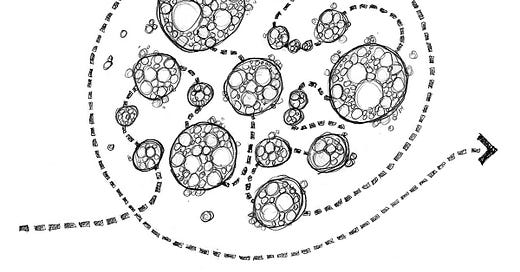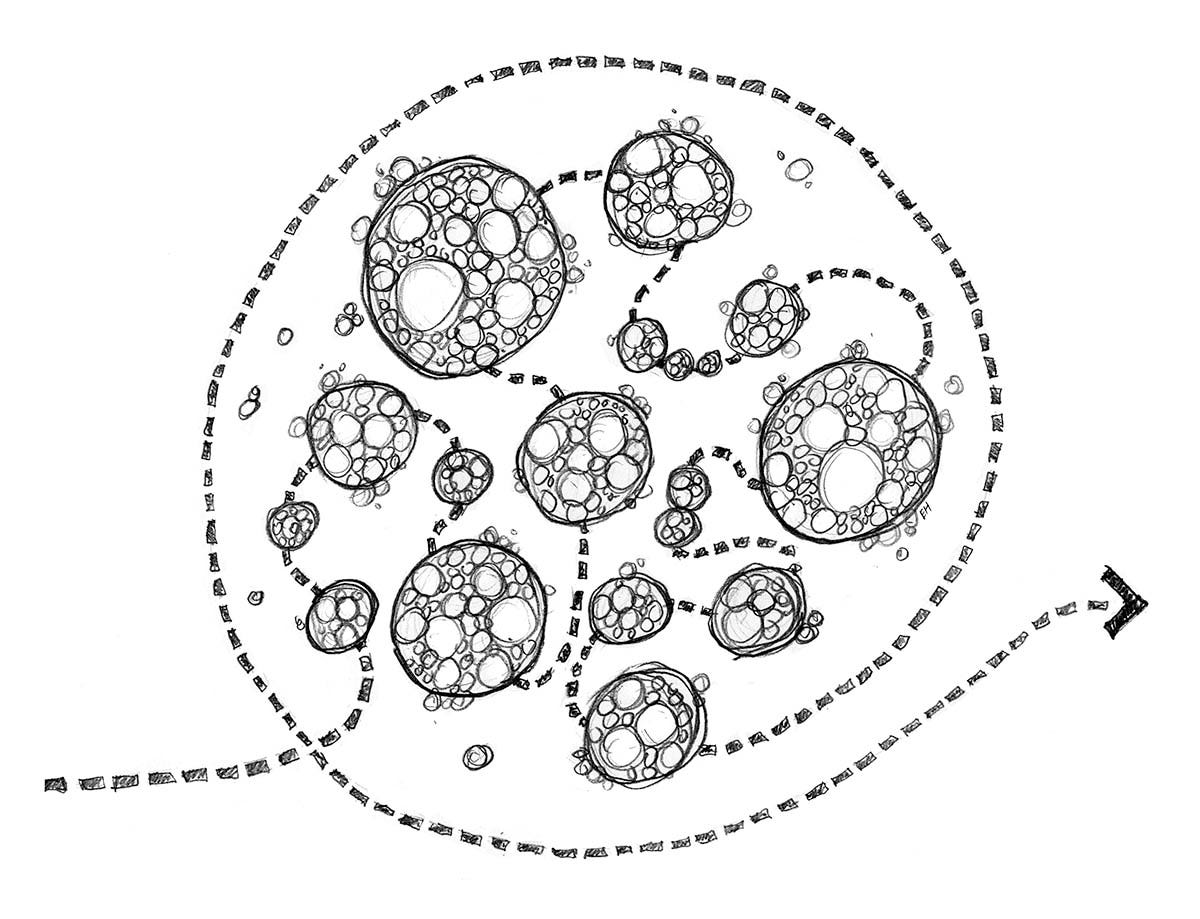How to Craft a Public Process for Community Building
The first step is maximizing participation of people from different groups. (Reading Time: 6.5 minutes)
Hi there! This is the first in a four-part series diving into the practical nuts and bolts of community engagement processes vis-à-vis community building and intergroup contact. These will be a bit longer than my typical missives, but they’re packed full of awesome content. Enjoy! ~Eric
How to Craft a Public Process for Community Building
The first step is maximizing participation of people from different groups. (Reading Time: 7.5 minutes)
In a time of deepening social fragmentation, how do we build common identity amongst diverse residents sharing the same patch of earth? How do we conduct community engagement practices to not just solicit input, but bridge different groups of people and strengthen place-based communities?
Loyal readers will recognize these guiding questions. In pursuit of answers, we have traversed the fertile fields of interdisciplinary study and spelunked the caves of social and environmental psychology. There we uncovered, hiding in plain sight, decades of research into what drives our group relationships. Called “Optimal Contact,” this evolutionary wiring determines the emotional conditions that allow people to bridge their differences and form new group identities.
If you need a refresher on Optimal Contact, check out this past post, but here’s the distillation:
Optimal Contact maximizes the interaction between people of different groups
Optimal Contact minimizes anxiety about intergroup interaction.
Optimal Contact induces empathy or perspective taking between people of different groups.
We can use the three conditions of Optimal Contact to take a jeweler’s lens to our community engagement practices. Which ones best use Optimal Contact for building diverse and inclusive communities? Which ones do not? How do we infuse Optimal Contact within our community engagement practices to drip dry their potential as a socially regenerative force?
The Big Picture
Let’s start by looking at the early stages of a community engagement process, sometimes referred to as “process design.” These are the initial steps when we’re laying the groundwork for engagement and asking the big questions. Who’s going to be involved and how do we get them to participate? How will this conversation happen? How will you make decisions?
In terms of Optimal Contact, much of the focus in process design is on Condition #1: getting people from different groups to turn out, and ensuring that the community engagement process is inclusive and representative. However, we are also laying the groundwork for future success with Condition #2 (minimizing anxiety).
The first step is to gain clarity from the project’s sponsors about what they want from a community engagement process. Who’s deciding here? What questions are we asking the community? Who is the “community?”
This step, of course, aligns with any good community engagement process, even if your intention is simply to solicit input or do outreach.
The Spectrum of Public Engagement from IAP2 can be helpful here. Check it out my abbreviated version below. Where are you landing on this spectrum?
If your goal is to create the conditions for Optimal Contact, you’ll see that this is tough to do on the left-hand side of IAP2’s spectrum. The engagement techniques residing there don’t really lend themselves to Optimal Contact, especially Conditions #1 and #3.
And don’t forget, it’s totally acceptable if the goal of your project is to collect solicit input or inform. Sometimes that’s just where you are at. The important thing is to be clear in communicating your goals and clarify what you are asking from the community.
The #1 Tool in your Toolbox
Once you’ve established your parameters, the number-one tool in your Process Design toolbox is to gather a representative group of people to steward the process. Such an entity can go by many names: a steering group, a convening group, or a stakeholder team.
The number-one tool in your process design toolbox is to gather a representative group of people to steward the process.
I like the term “Convening Group,” and not just because it’s similar to the name of my landscape architecture practice. I like it because it emphasizes the Convening Group’s key purpose, to answer the question "How do we convene our communities to best deliberate over this question?"
The key distinction is that the Convening Group does not decide on project outcomes. They are focused solely on the composition and character of the engagement process. Otherwise, things can easily get messy.
It’s helpful to make this very clear when inviting people to serve on the group. I often draft up a job description that lays it out a shared set of expectations and responsibilities.
I am seeing a Convening Group approach taken more and more, especially in efforts to include racial and ethnically diverse representation in community processes. For example, recent City of Seattle efforts that partner with local non-profits, form stakeholder groups, or use community liaison, are echoes of a Convening Group.
But it’s still remarkable how regularly a Convening Group will get skipped, misapplied, or its potential unrealized. The Convening Group stage of the process is often not supported with staff time or energy, or the roles of Convening Groups aren’t clear or even respected.
Here is the critical step: if the goal of your engagement process is to increase contact between different groups of people, then representatives from those different groups need to be on your Convening Group.
If the goal of your engagement process is to increase contact between different groups of people, then representatives from those different groups need to be on your Convening Group.
There is no other way. Otherwise, your outreach efforts will be swimming upstream for the entire project.
Often, bottom-up community projects are initiated by a small group of like-minded folks with a single interest. The prospect of inviting people from different groups into your process can be really intimidating. But this is the time for courageous work. Make cold-calls to local organizations or talk to folks you don’t know to identify people who could get involved. And then listen and make sure they have a seat at the Convening Group table.
The investment you make at this point in the process will pay off in future spades, not only for your project, but for your community.
For those leading top-down agency projects, it may be time to rethink your process. Forming an empowered Convening Group is a critical piece of bridging the gap between consultants/governments and the communities they are serving. A lack of investment in this step results in a yawning deficit of understanding and limited participation in design and planning processes.
Time to Deliver
So, once you’ve got your representative Convening Group up and running, it can then do two things for your Optimal Contact strategy:
For Condition #1 (maximizing inter-group contact), it can really deliver:
It can help determine meeting times and places that will work for the most number of different groups.
It can help identify communication/outreach channels that will reach the most people.
It can help clarify your messaging for what’s at stake. People typically show up because they are excited, curious, or upset at a change that will impact them directly. What’s going to motivate people of different groups to get involved?
And most importantly, Convening Group members will personally invite people to participate. Studies demonstrate that this is the number-one reason people show up and take part. If you have ten people on your Convening Team from different groups, and each of them personally invites ten people… boom! You are in business.
The Convening Group can also set the stage for Condition #2 (reducing anxiety). Here’s how:
It will identify what dynamics and challenges currently exist within the community. Maybe there’s been some historical tension around the project, or certain groups are upset about particular issue. Knowing this allows project organizers to prepare or adapt the process to ensure these challenges aren’t disruptive to the community conversation you want to have.
It can review practice-runs of your community events to ensure that everything is clear and comprehensible. Not grasping the details of a project or relieving certain worries can lead to anxiety and misunderstanding during an event.
It can identify the best format for the engagement process. It may be a community meeting, but maybe it’s something else. A series of dinners or social events? An art making event?
Well-facilitated community meetings seem to hit a sweet spot balancing participation and perspective taking, but there are lots of options out there. Every community process needs customization. Every format has its pros and cons, especially with an Optimal Contact lens.
For example, I was inspired last year by an Arkansas Fish and Game floodplain management challenge with their community. In response, they conceived their engagement process as a series of large community dinners with government officials intermixed. Optimal Contact? #1: check. #2: check. #3: check.
Towards a Better Future
So, if you want to design a process to maximize contact between people of different groups, the Convening Group is an essential beginning step.
By infusing Optimal Contact within our community engagement practices, we can maximize their potential as a socially cohesive force. We can have some contribution, if not leadership, in altering our fragmenting social trajectory. And we can contribute to our evolving Great Democratic Experiment of how diverse people can reside alongside each other and collaborate on their shared future.
Next time, we’ll dive into the structure of a community event. We’ll assume you’ve done the Convening Group work to get a representative maximum turnout. What tools and techniques can we use at that event to reduce anxiety and encourage perspective taking?
Read it now in Part 2: “How to Set Up a Community Meeting for Community Building!”
~ Eric
PS. Like what your reading? The Answer is Community is supported by generous contributions from readers like you. If you enjoy its commentary and analysis, please support this work by donating through our Patreon account.







